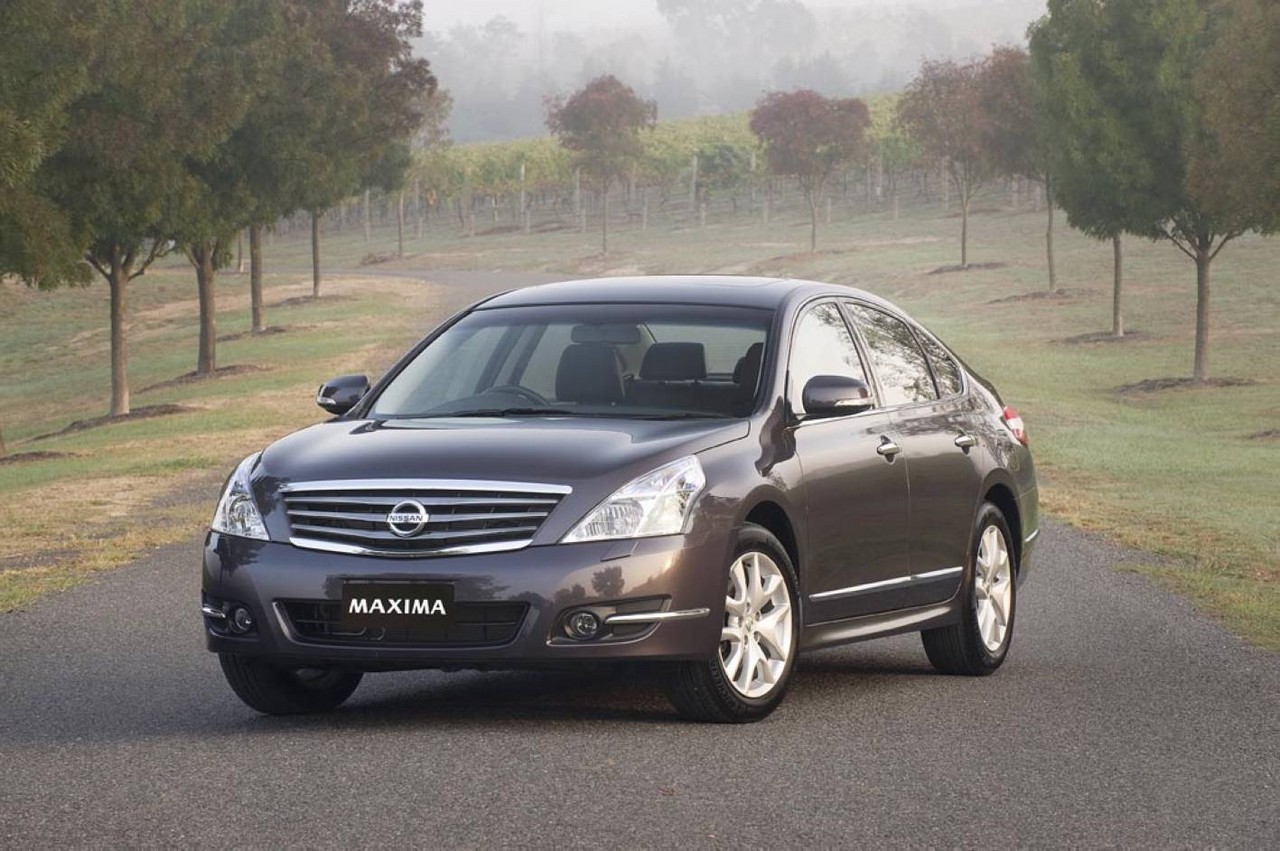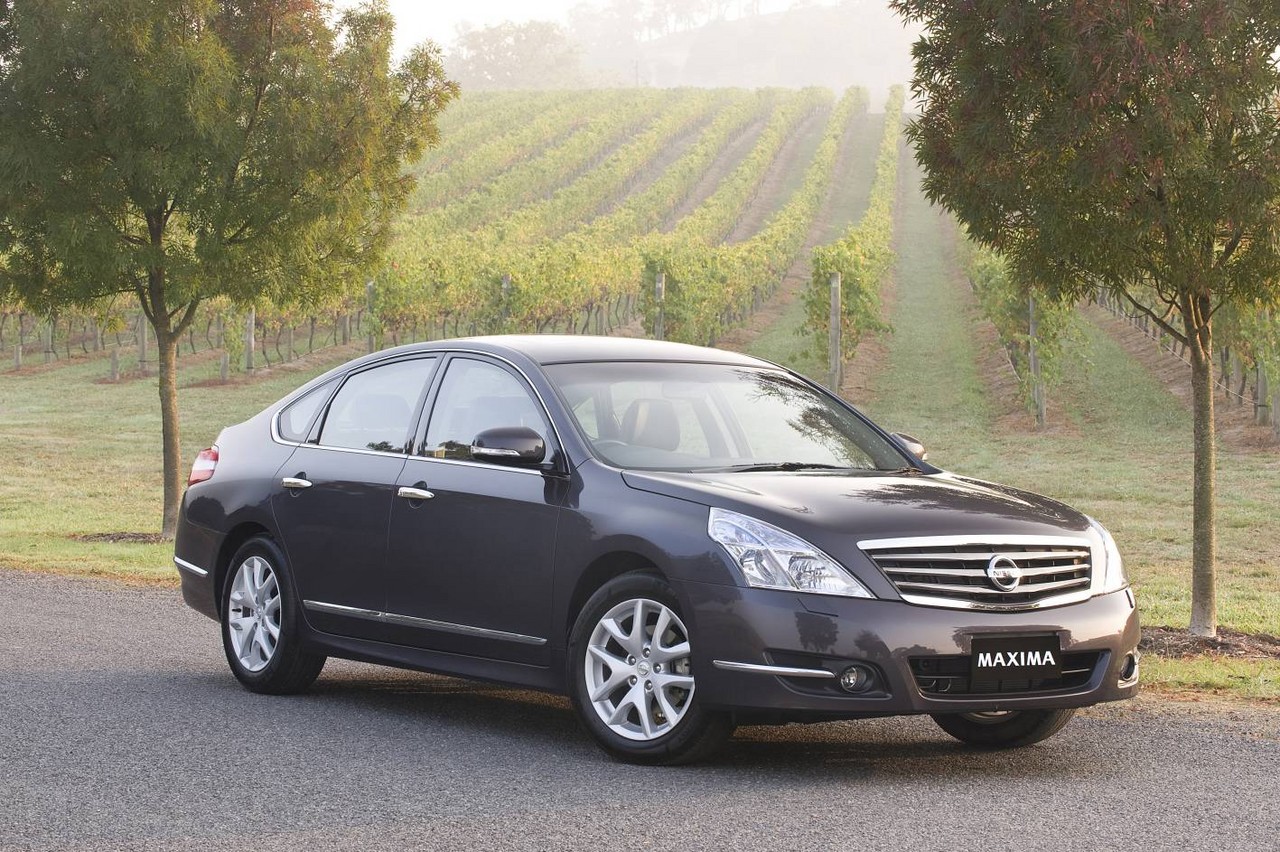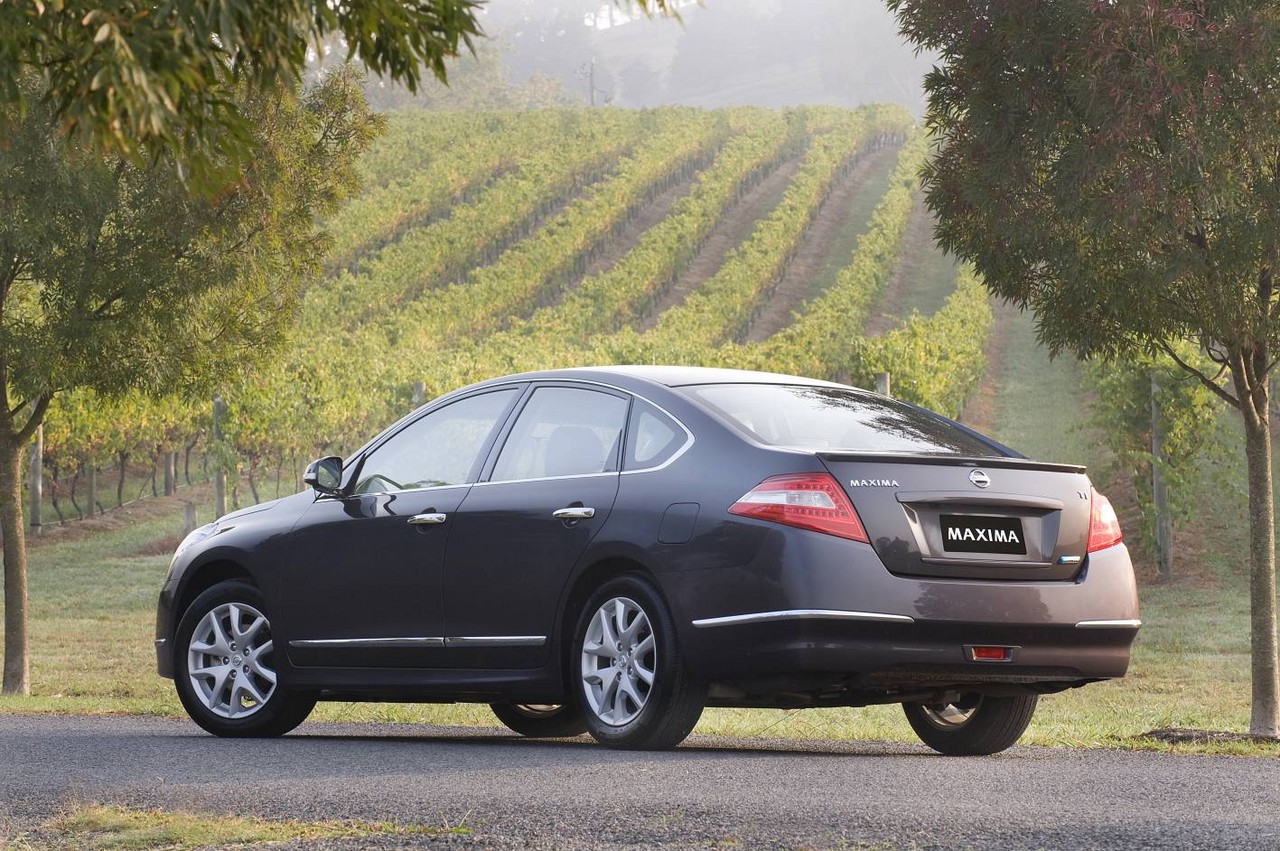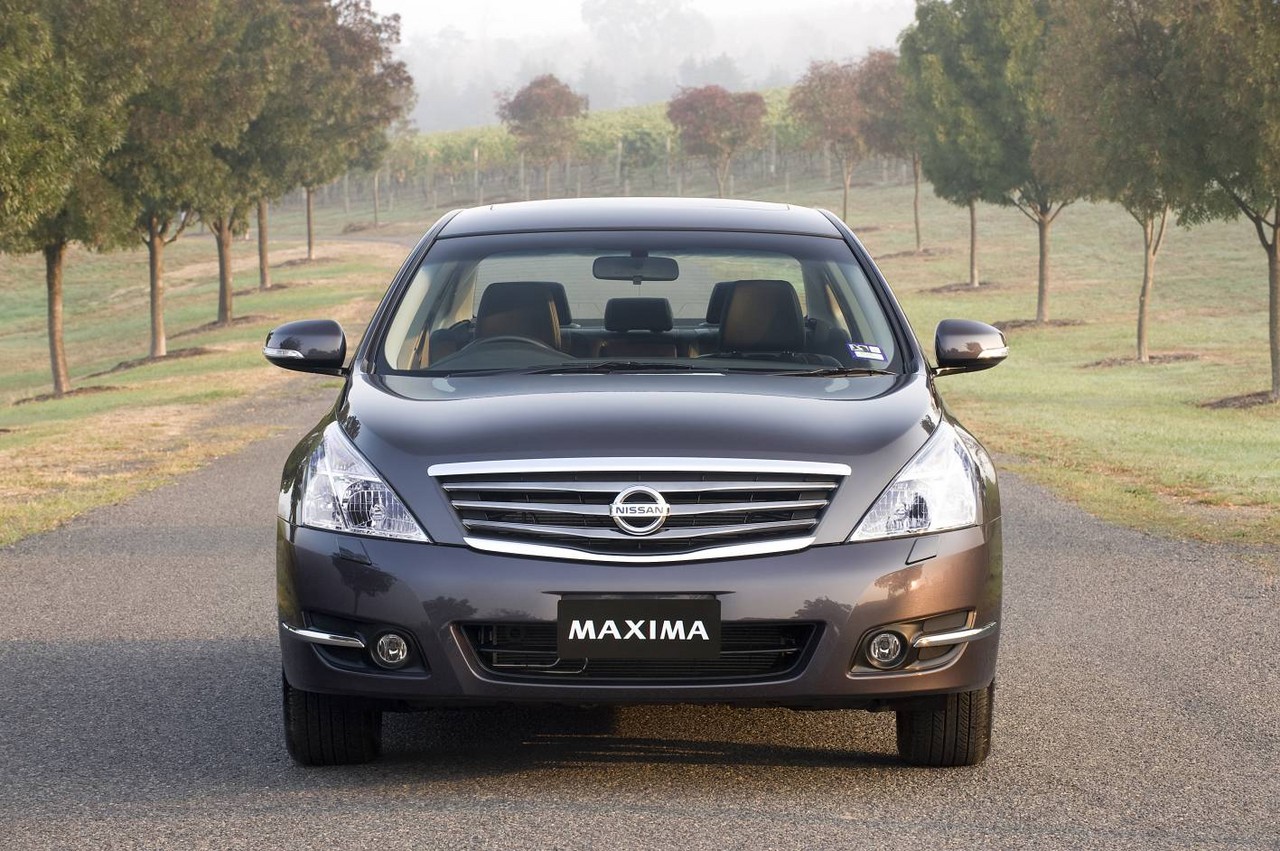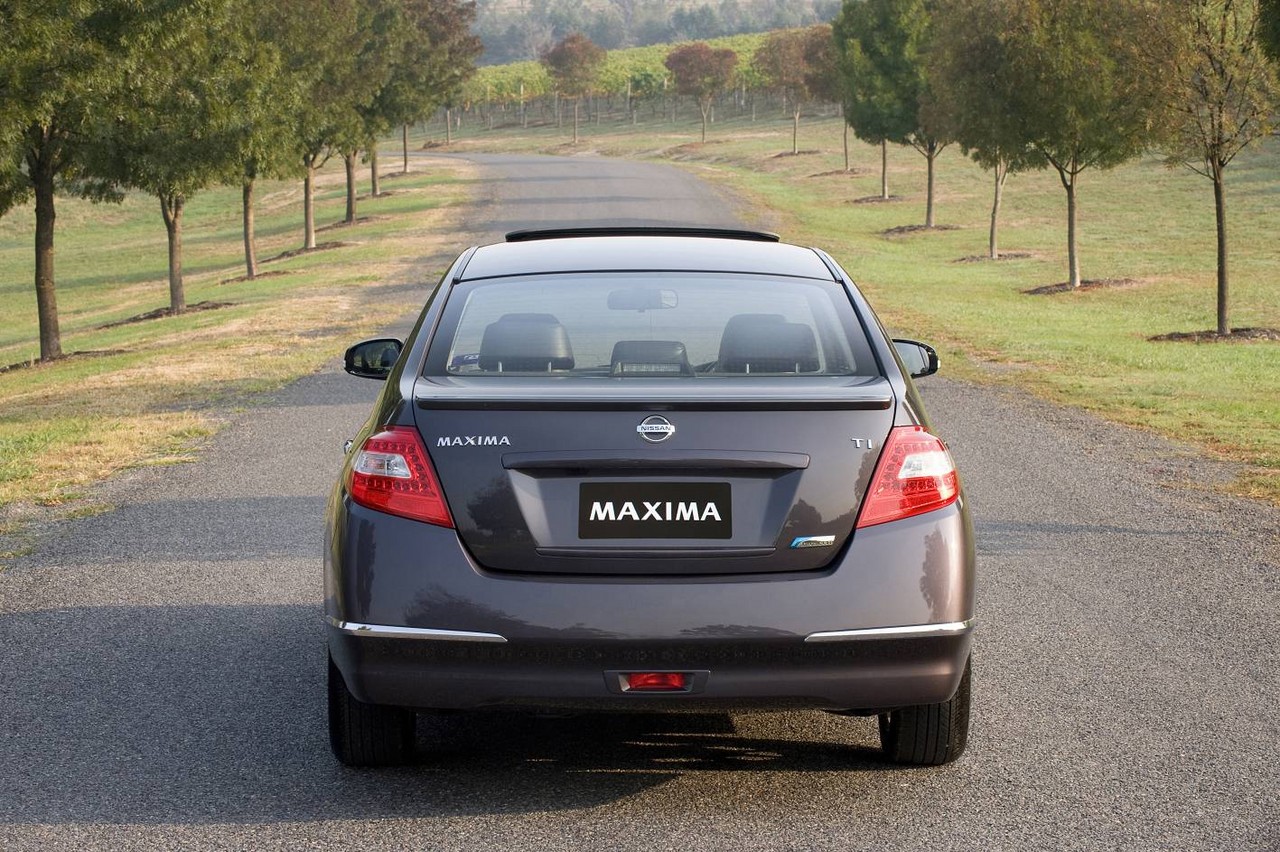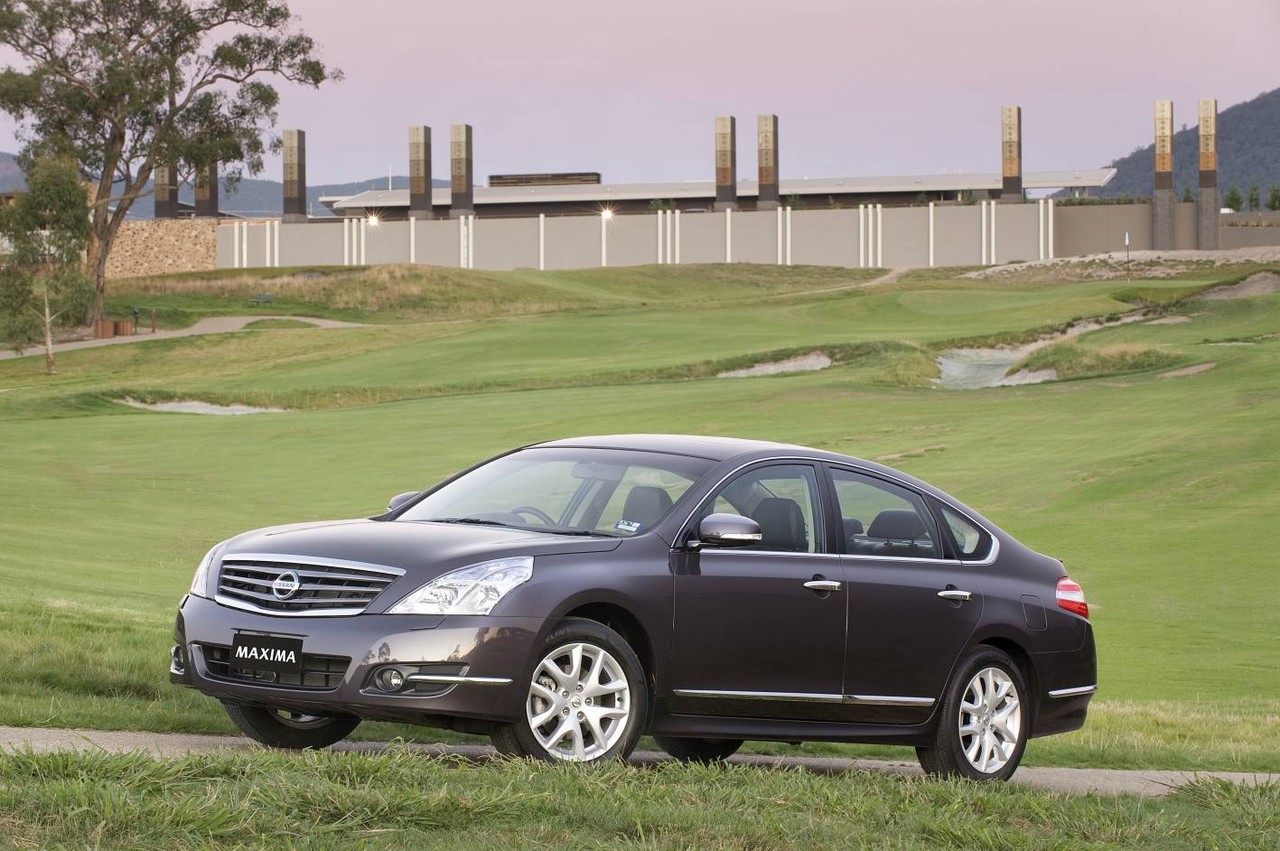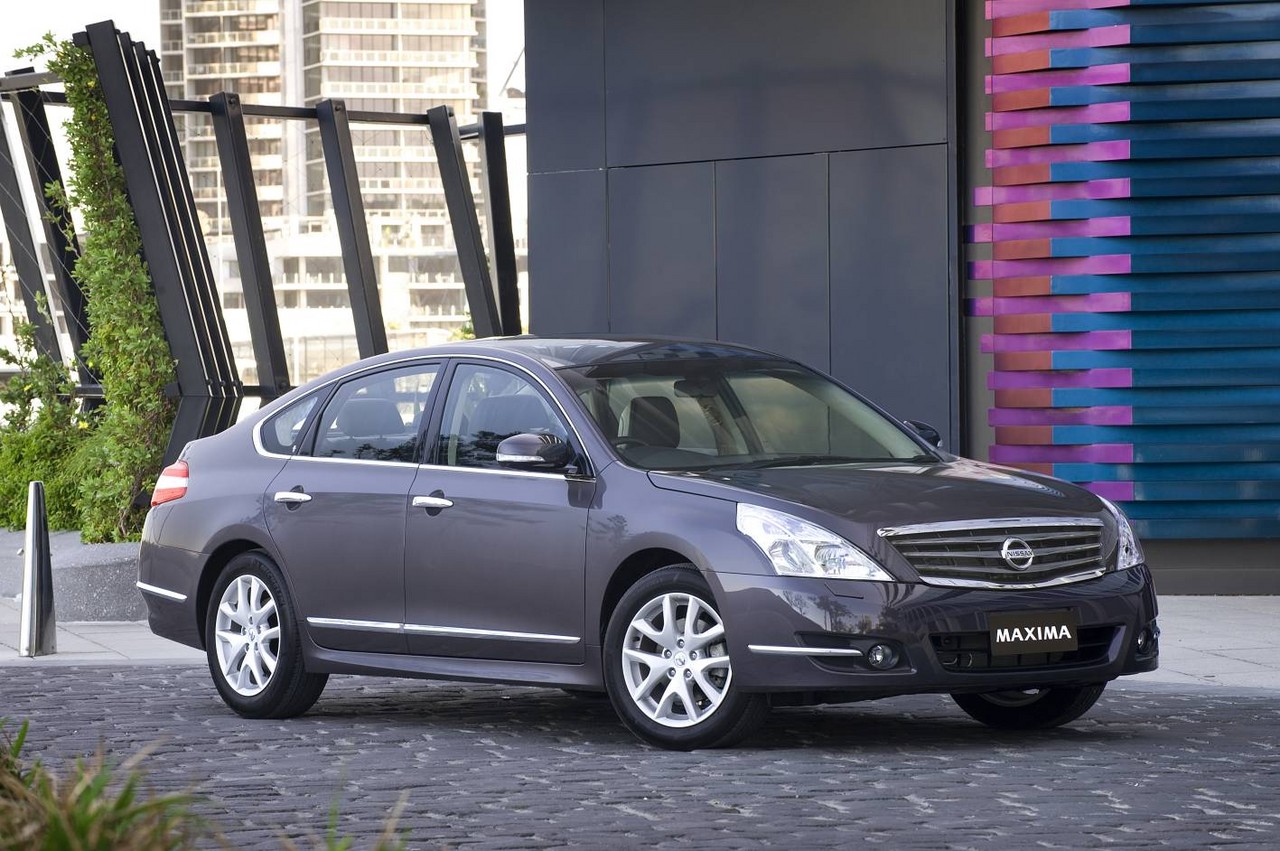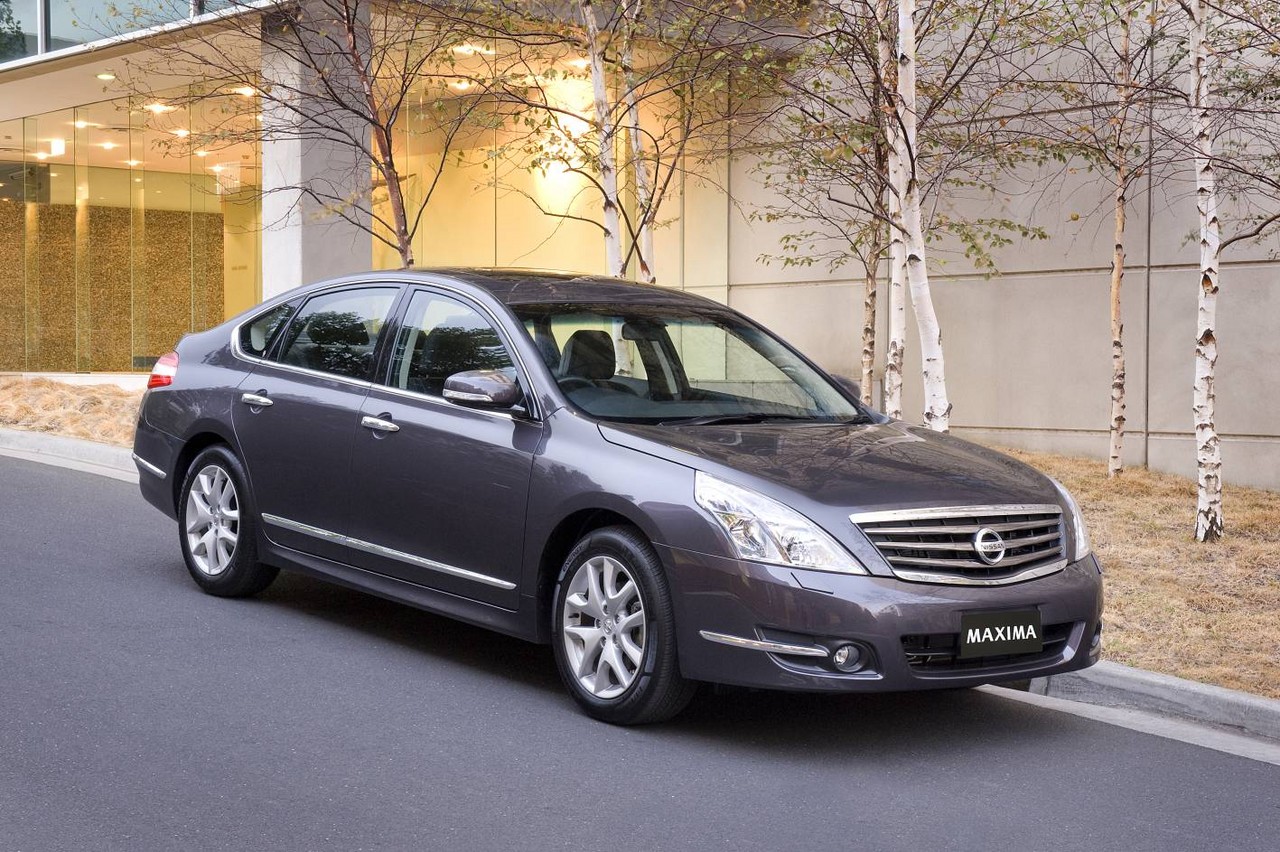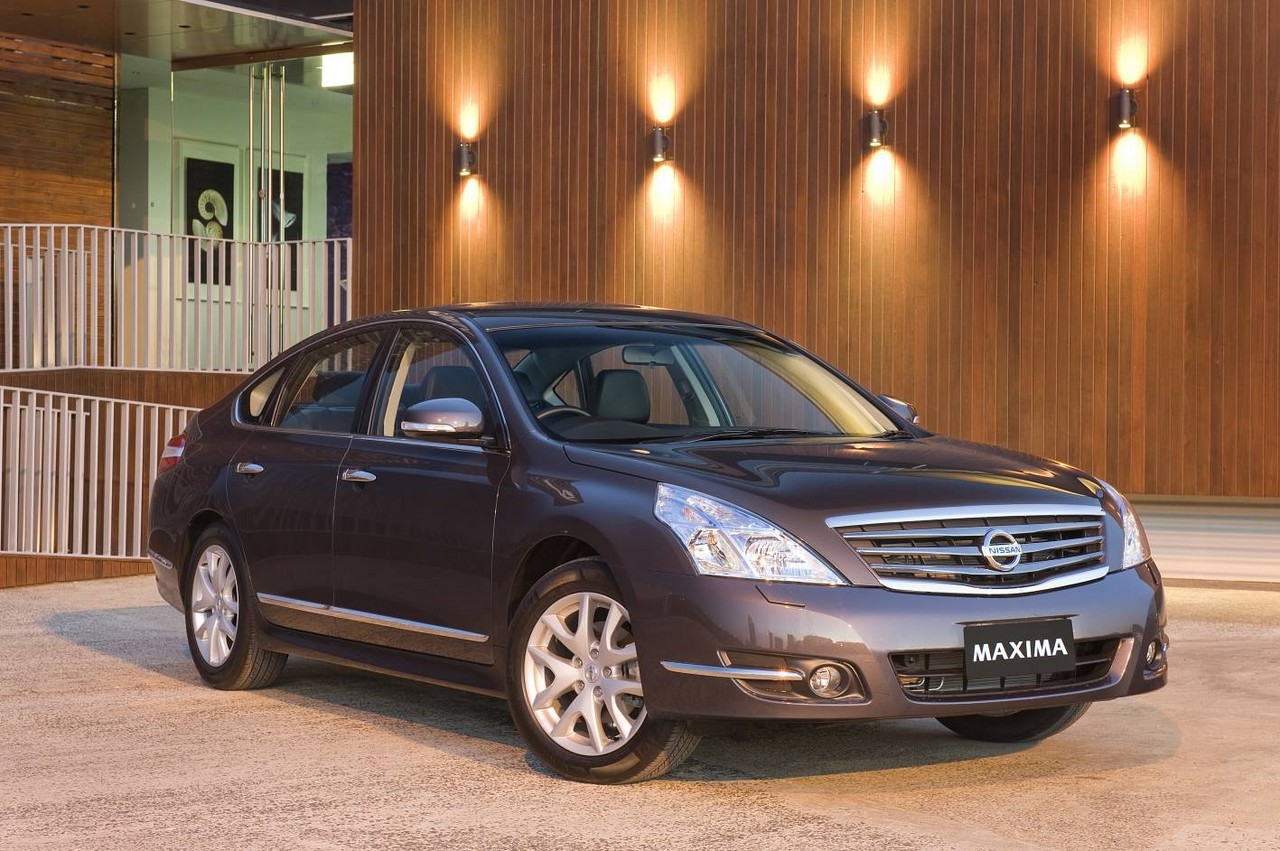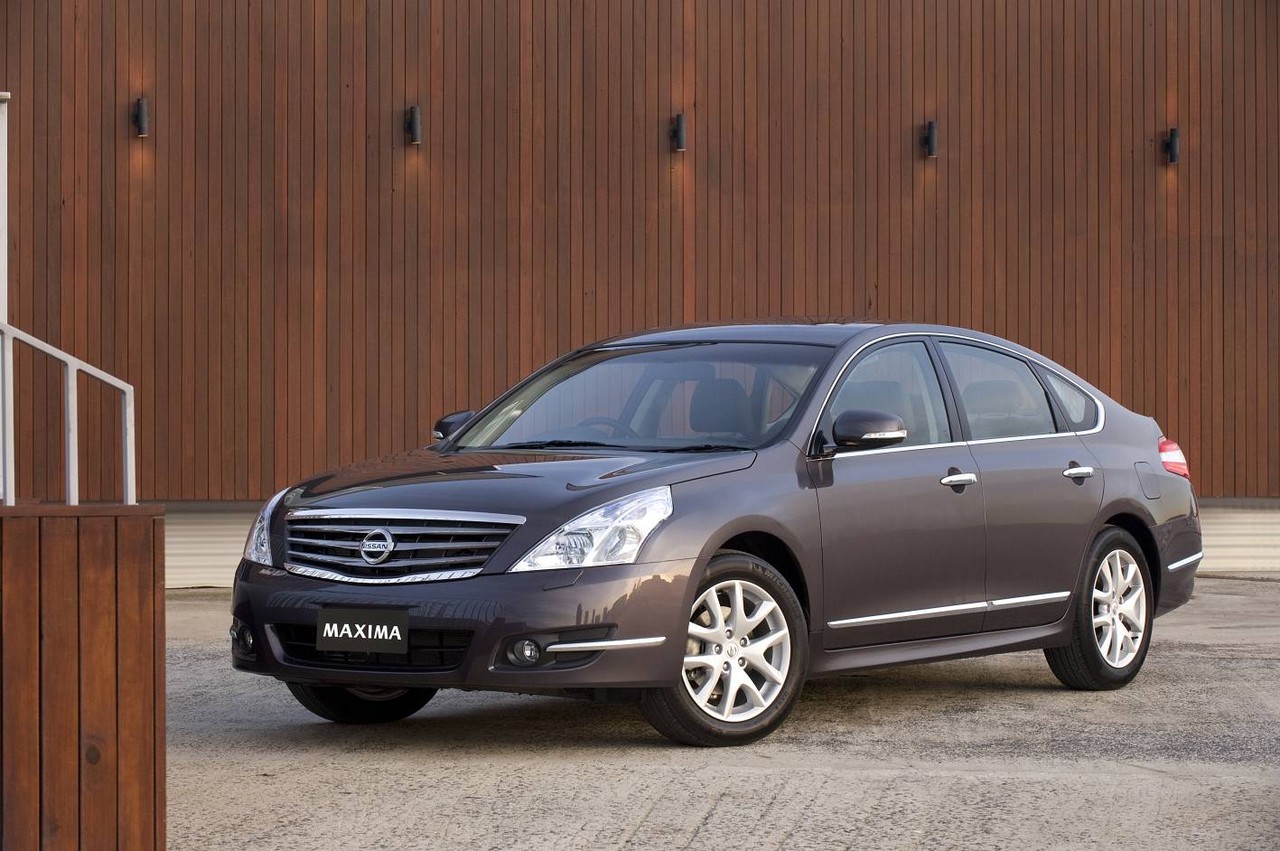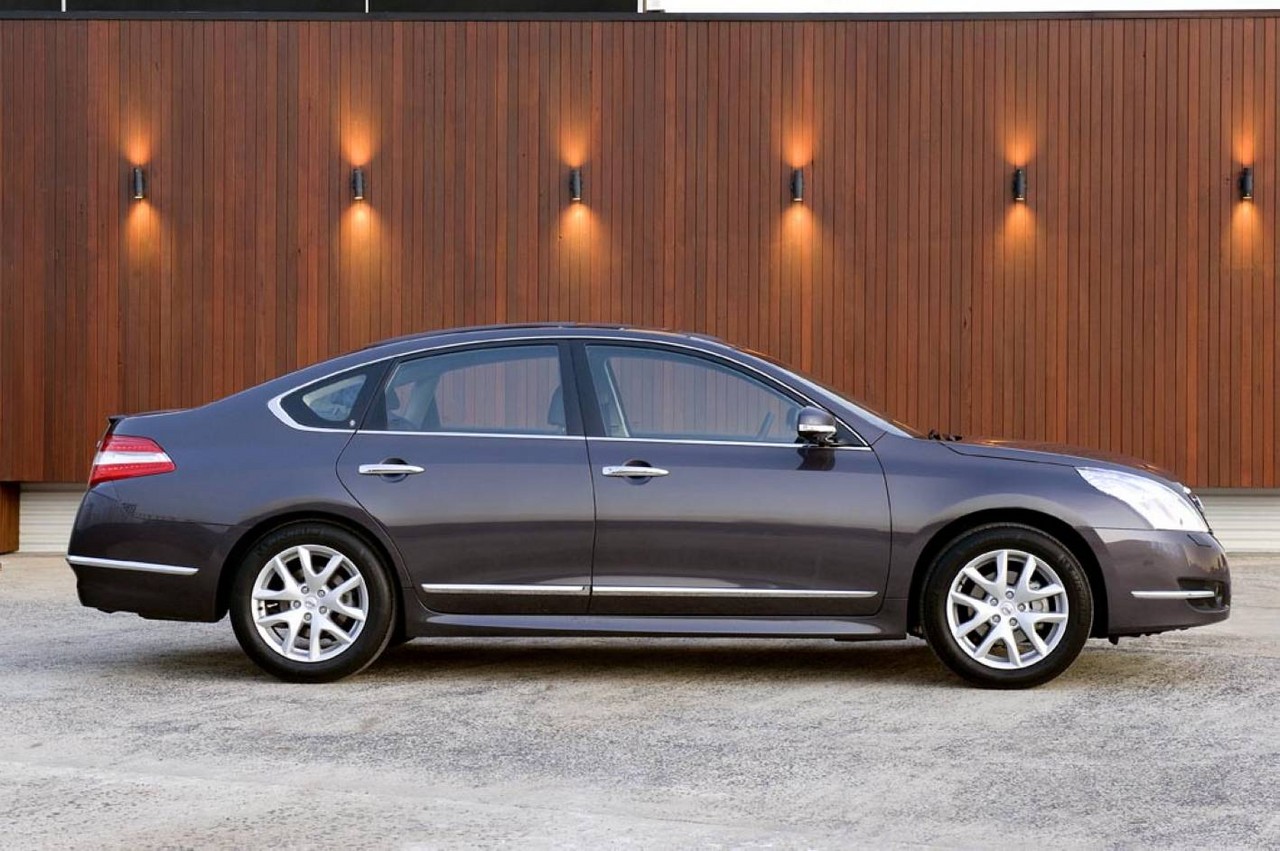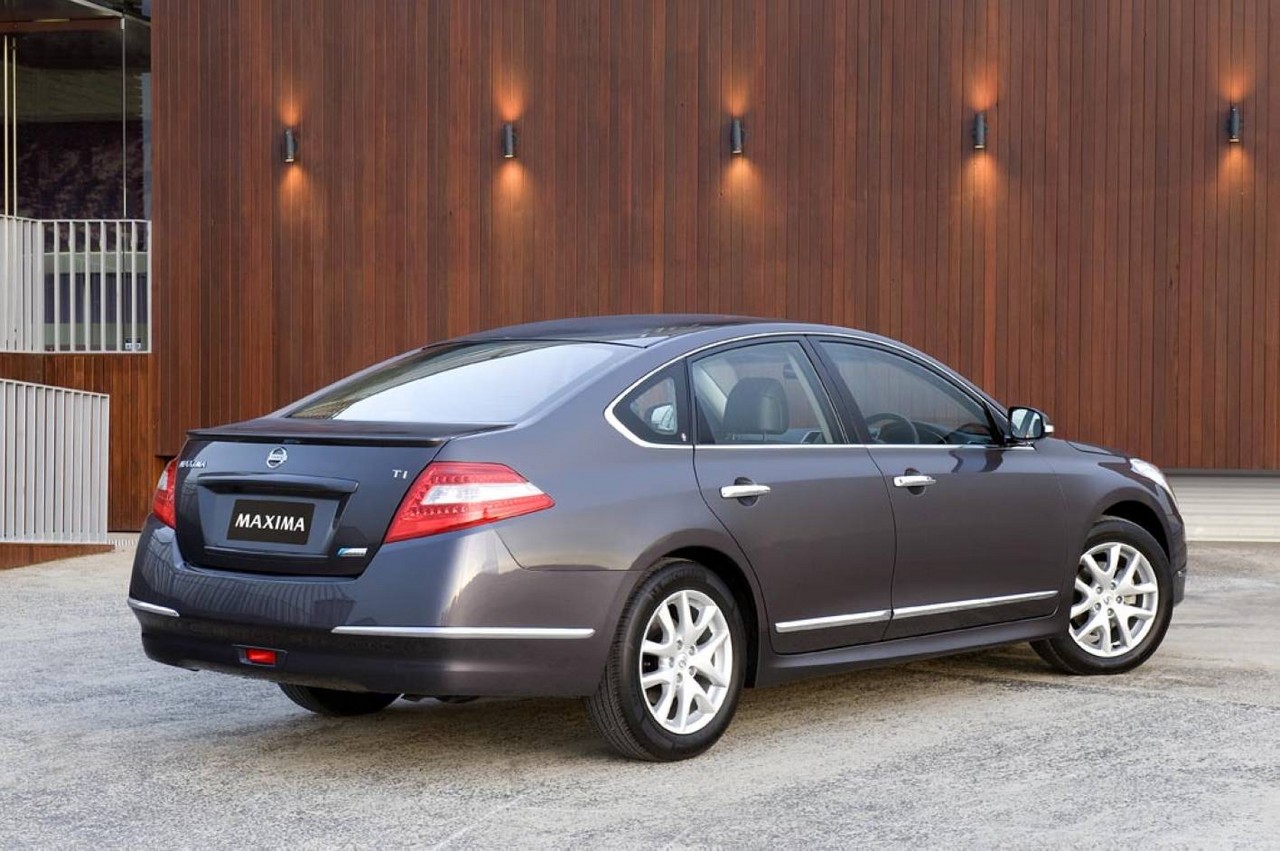
- Refined 2.5- and 3.5-litre V6 petrol engines
- Competent dynamics
- Quiet, well-insulated cabin
- Large boot
- Steering is well-weighted…
- … but lacks precision and feedback
- CVT drone (although quieter than many rivals)
- Steering wheel lacks reach adjustment
- Some cheap interior plastics
Overview
Released in April 2009, the Nissan J32 Maxima was a large, front-wheel drive sedan. Manufactured in Kyushu, Japan, the J32 Maxima was available with either 2.5- or 3.5-litre V6 petrol engines (Nissan’s VQ25DE and VQ35DE engines, respectively). As per the table below, the J32 Maxima range consisted of 250 ST-L, 350 ST-S and 350 Ti models.
VQ25DE and VQ35DE engines
The VQ25DE and VQ35DE engines both had aluminium blocks and heads, four valves per cylinder, double overhead cams and Nissan’s Continuously Variable Valve Timing Control (CVTCS). While regular unleaded petrol (91 RON) was recommended for the 2.5-litre engines, premium unleaded petrol (95 RON) was recommended for the 3.5-litre engines.
Both engines were mated to continuously variable transmissions (CVT, or Nissan’s ‘Xtronic’) which had six preset ratios for sequential shifting and an Adaptive Shift Control (ASC) function that adapted to the driver’s driving style.
Dimensions and body
Compared to the J31 Maxima , the J32 Maxima was 15 mm longer (at 4850 mm), 30 mm wider (1795 mm) and 15 mm higher (1485 mm), though the wheelbase was unchanged (2775 mm). Furthermore, the J32 Maxima achieved a 40 per cent increase in torsional stiffness, with front lateral stiffness increased by 85 per cent, through the use of an X-shaped cowl structure and ultra-high-tensile steel.
Suspension
The J32 Maxima had MacPherson strut front suspension and multi-link rear suspension.
| Variant | Edition | Engine | Trans. | Peak power | Peak torque |
|---|---|---|---|---|---|
| 250 | ST-L | 2.5-litre petrol V6 (VQ25DE) |
6sp CVT | 134 kW at 6000 rpm | 228 Nm at 4400 rpm |
| 350 | ST-S, Ti |
3.5-litre petrol V6 (VQ35DE) |
6sp CVT | 185 kW at 6000 rpm | 326 Nm at 4400 rpm |
Safety equipment
Standard safety equipment for the J32 Maxima included dual front airbags, front-side airbags, full-length curtain airbags (i.e. for front and rear occupants), ABS, electronic brake force distribution, brake assist, electronic stability control, traction control, active front seat head restraints and front seatbelts with pretensioners and load limiters.
Brakes
The J32 Maxima had 296 mm by 24 mm vented front brake discs and 292 mm by 9 mm solid rear discs.
Features
Standard features for the Maxima 250 ST-L included included 17-inch alloy wheels with 215/55 R17 94V tyres, a six speaker sound system with a six -disc CD player, MP3-compatibility and auxiliary input, dual-zone climate control air conditioning, leather seats, power adjustable front seats (eight-way adjustable for the driver and four-way adjustable for the font passenger), cruise control, front and rear fog lights, xenon headlights, automatic headlights, a leather-wrapped steering wheel, Bluetooth mobile phone connectivity, remote central locking, power windows and folding mirrors, a trip computer and an immobiliser.
The Maxima 350 ST-S was further equipped with heated front seats, rear parking sensors, a proximity key, illuminated vanity mirrors and a rear spoiler.
Beyond this, the Maxima 350 Ti added an eleven speaker Bose sound system, Bluetooth mobile phone connectivity, satellite navigation with a seven-inch touch screen, a DVD player, reversing camera, park assist display and driver’s seat memory settings.
November 2011: Maxima update
The Maxima was updated in November 2011 as Bluetooth mobile phone connectivity with steering wheel controls were fitted across the range. The Maxima Ti was also fitted with:
- Nissan’s Adaptive Front Lighting System (AFS) which adjusted headlight direction based on steering inputs and, when stopped at a crossroad, the left-hand low beam headlight would illuminate the indicated direction of travel;
- A forward-facing ‘Side View Camera’ that was positioned on the front passenger door mirror; and,
- A rear sunshade which automatically retracted when reverse gear was engaged.
Brochures
Related links
- Specifications: Nissan J32 Maxima (May 2009)
- Specifications: Nissan J32 Maxima (March 2011)
- Wikipedia.org: Nissan J32 Teana/Maxima
